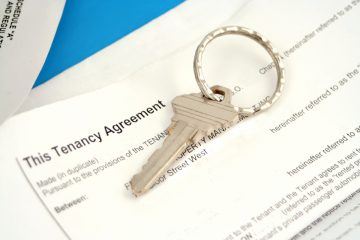Deposit Expert Advises Landlords on Best Practice
“There’s no magic formula for avoiding tenancy deposit disputes,” says My Deposits’ Simon Lacey.
However, there are steps that you can take to avoid issues at the end of a tenancy.
It is not only a legal requirement for landlords to protect their tenant’s deposit within 30 days of receipt, it is also in your best interest to protect your property investment and lettings business.
Lacey insists that the most important thing to remember when raising a dispute is evidence: “If you’re going into court, the judge wants to see evidence. Because in law, it’s the tenant’s deposit, and if you want to make deductions, you have to show there’s a breach of a particular clause that means you’ve suffered a loss.”
“There’s no prize for guessing the main dispute cause – cleaning,” he continues.
Cleaning problems are evident in most deposit dispute cases that My Deposits deals with. “It all centres around what expectations are at the beginning of the tenancy,” Lacey explains. “Set the expectations to the tenant in writing of how the property is taken.”
This should be included in your inventory, which can be completed by landlords, letting agents or a third party inventory clerk. The adjudicators will use this document to ensure there is no bias toward the landlord. If you create the inventory yourself, you must get the tenant to sign it or acknowledge receipt in some way. The tenant then has seven days to inform you of their agreement/disagreement of the condition of the property stated in the report.

Deposit Expert Advises Landlords on Best Practice
“The next biggest issue we have is redecoration,” Lacey continues. “Damage, not so much, missing items, occasionally. We don’t see many rent arrears cases at the moment, and you must note that tenants cannot raise a dispute if they are in rent arrears.”
Lacey advises landlords to use the same inventory at check in and check out so that it is easy to compare and note the differences. He also urges you to embed photographs in the document, which should be taken from the same spots before the tenants move in and after they move out.
The inventory should detail the condition and cleanliness of the property at the start of the tenancy. If you have had the property professionally cleaned before the tenants move in, it is advised that you provide a copy of the receipt to the tenants, so that you can expect them to return it professionally cleaned at the end.
If you state that you will accept a domestic clean, you must explain what this means – we all have a different idea of what is clean. If you detail this in the inventory, the tenant will know how to return the property. If they return it in a substandard condition and a dispute is raised, the adjudicator can “build a picture from the day the tenant moves in to the day they move out” through your evidence.
You should also compile a comprehensive report of any problems that have arisen throughout the tenancy. If you have any reports from contractors or notes from periodic inspections, they should all be included.
When recording each item in the property, remember to keep inventories up to date. You may need to replace an appliance in the property, so the inventory must be updated when you do so. If it is not included in your documents, the adjudicator will not know what you put in.
“Videos or photographs aren’t evidence alone,” says Lacey. “Written descriptions should explain where problems in the room are and the size of problems.”
If a deposit dispute does arise, Lacey insists that you must “keep a dialogue with your tenants, show that you are trying to resolve the issue”. As tenants can raise a dispute up to 90 days from when they move out, it is vital that you keep a record of communication during this period.
“99.9% of landlords are fair to their tenants,” he says. “But every time a nice tenant moves in, 12 months down the line, they might not be such a nice tenant, so you need to keep evidence from day one.”
You may like to provide your tenants with a moving in pack at check in so that they know what they can and can’t do – this will also be used as evidence at the end of a tenancy.
But the main thing to remember?
“The main document you need is a robust tenancy agreement that is signed by the tenant with relevant clauses,” Lacey explains. “The second most important is the inventory.”
Take all of these tips on board to ensure best practice and you should avoid losing money in the future. Remember to always keep copies of evidence, and the dispute will be resolved.









